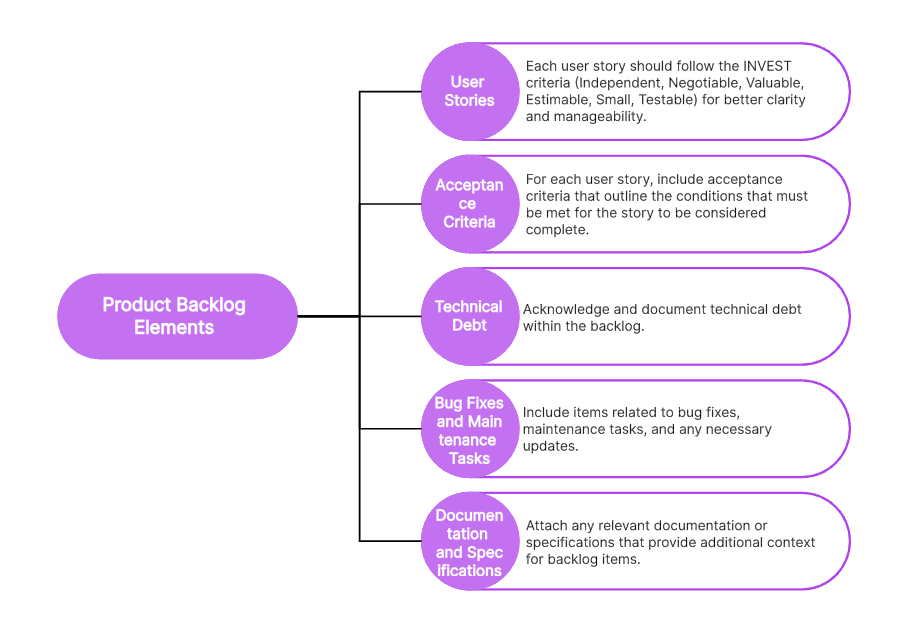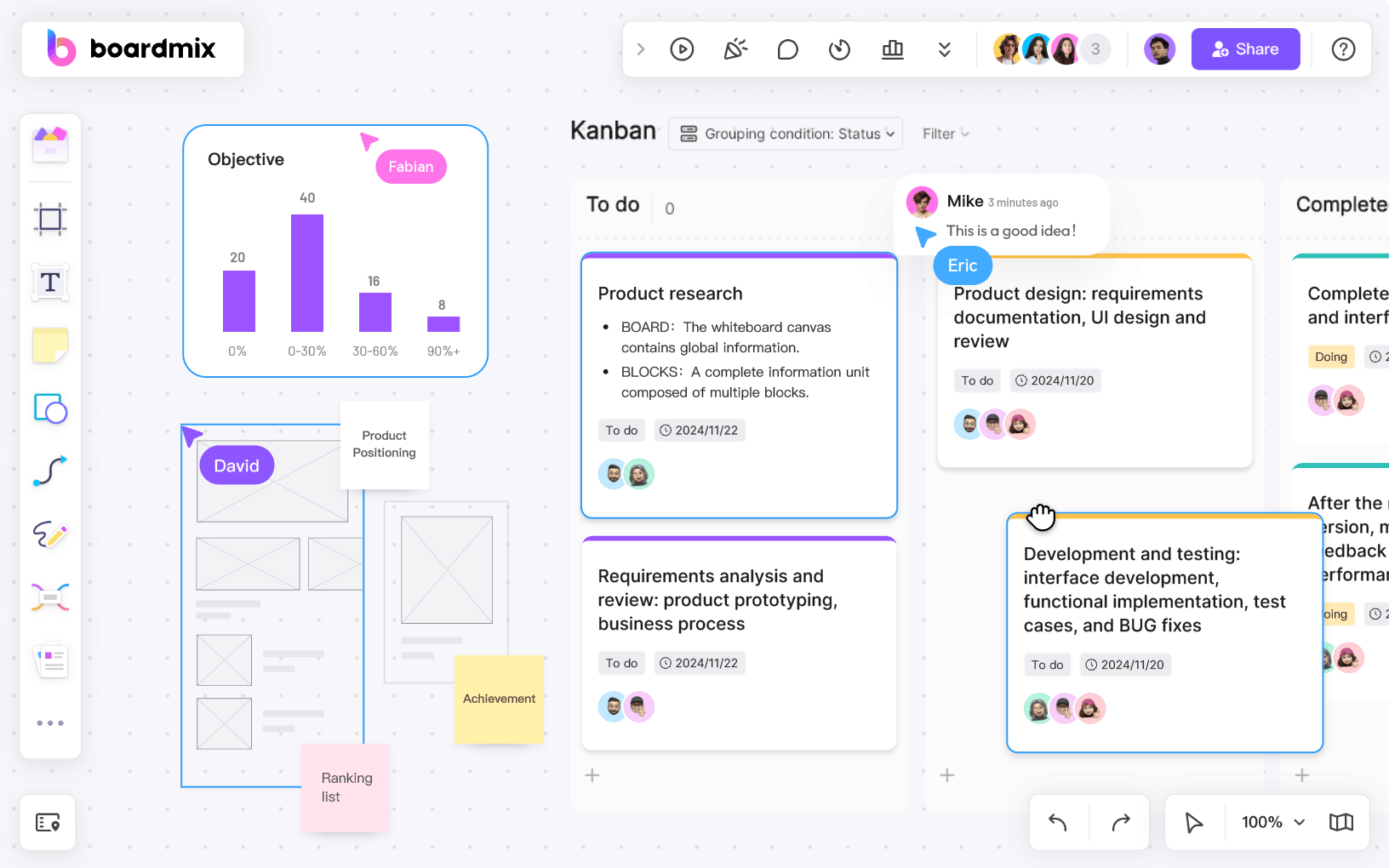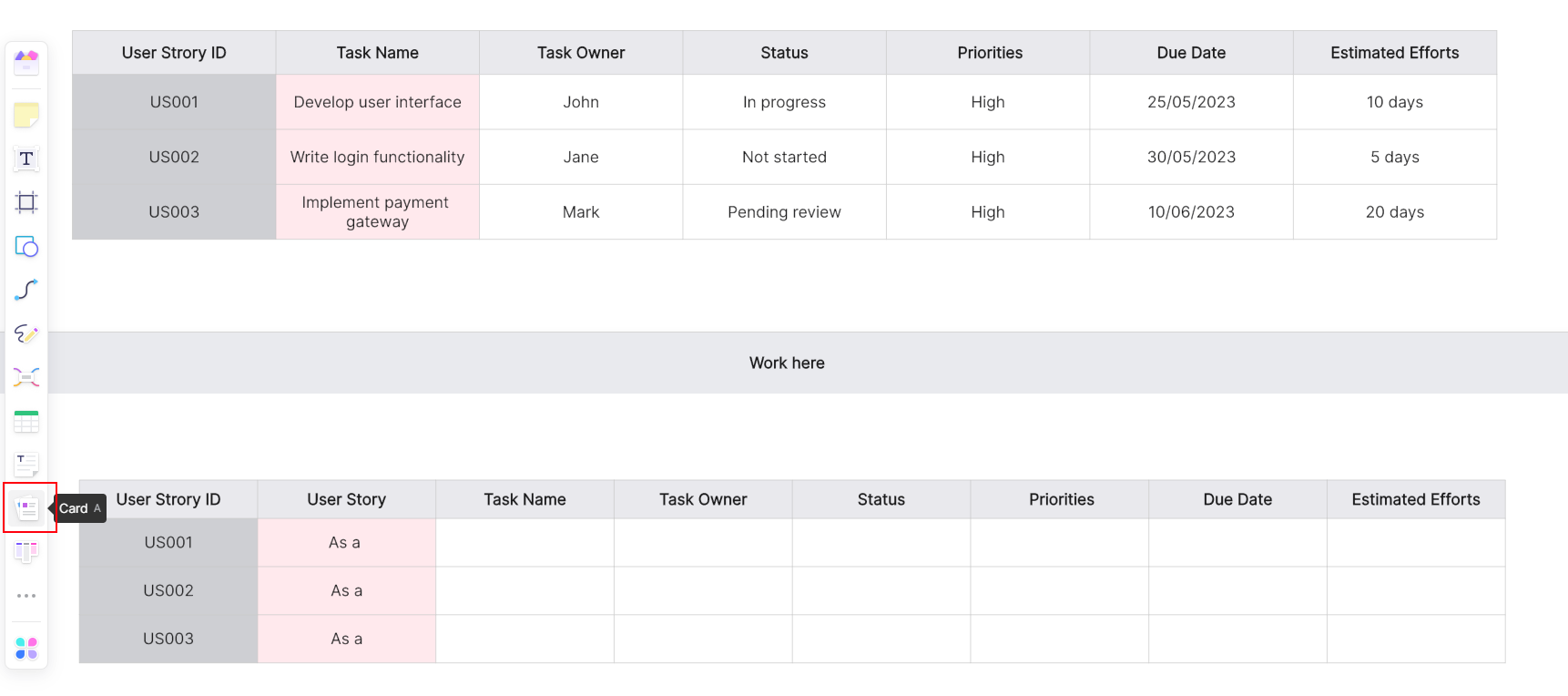In the dynamic landscape of software development, Agile methodologies have become increasingly popular for their ability to adapt to changing requirements and deliver high-quality products in a timely manner. At the heart of Agile lies the concept of the product backlog, a powerful tool that helps teams prioritize, plan, and execute their work efficiently. This article explores the essence of a product backlog, its significance in Agile development, and best practices for its effective implementation.

Part 1. What is the Product Backlog?
The product backlog is a dynamic and ordered list of features, enhancements, and fixes that constitute the overall vision for a product. It serves as the single source of truth for all the work that needs to be done, acting as a repository for both functional and non-functional requirements. The product backlog is not a static document; it evolves throughout the project as new insights emerge, priorities shift, and customer feedback is incorporated.
Part 2. What is the Significance of Product Backlog in Agile Management?
The Product Backlog is a crucial component in Agile development methodologies, serving as a dynamic and prioritized list of features, enhancements, and fixes that represent the requirements for a product. Its significance lies in several key aspects within the Agile framework:
- Dynamic Requirements Management: The Product Backlog is constantly evolving and is regularly refined based on feedback, changes in business priorities, and emerging requirements. This allows teams to adapt quickly to shifting circumstances and ensures that the product remains aligned with business goals.
- Prioritization: The Product Backlog is prioritized based on business value, customer needs, and other relevant factors. This prioritization guides the development team in determining what features or tasks to work on next. It ensures that the most valuable and critical features are addressed early in the development process.
- Flexibility and Adaptability: Agile development is known for its flexibility and adaptability to change. The Product Backlog plays a key role in facilitating this adaptability by allowing the product owner to reprioritize and add or remove items based on evolving requirements or feedback from stakeholders.
- Transparency: The Product Backlog provides transparency into the upcoming work for the development team and stakeholders. Everyone involved in the project can see what features are planned, their priority, and the estimated effort required. This transparency fosters collaboration and a shared understanding of the product roadmap.
- Continuous Improvement: Regularly reviewing and refining the Product Backlog during ceremonies like sprint reviews or backlog grooming sessions allows the team to learn from previous iterations. This continuous improvement helps refine estimates, enhance understanding of requirements, and optimize the overall development process.
Part 3. What Should Be Included in a Product Backlog?
A well-structured product backlog is crucial for the success of any Agile project. It serves as a comprehensive repository of features, enhancements, and fixes that contribute to the overall vision of the product. Here are the key elements that should be included in a product backlog:

1. User Stories:
User stories are concise, customer-centric descriptions of a feature or functionality. They capture the "who," "what," and "why" of a requirement from an end-user perspective.
Each user story should follow the INVEST criteria (Independent, Negotiable, Valuable, Estimable, Small, Testable) for better clarity and manageability.
2. Acceptance Criteria:
For each user story, include acceptance criteria that outline the conditions that must be met for the story to be considered complete.
Acceptance criteria help in defining the expected behavior and functionality, providing a clear understanding of the requirements.
3. Technical Debt:
Acknowledge and document technical debt within the backlog. Technical debt represents the work that needs to be done to address shortcuts or compromises made during development.
Balancing new feature development with the resolution of technical debt is essential for maintaining the long-term health and sustainability of the product.
4. Bug Fixes and Maintenance Tasks:
Include items related to bug fixes, maintenance tasks, and any necessary updates. These ensure that the product remains stable, secure, and aligned with changing external factors.
5. Documentation and Specifications:
Attach any relevant documentation or specifications that provide additional context for backlog items. This could include wireframes, mockups, or detailed requirements documents.
Clear documentation aids in a shared understanding of the product vision and minimizes misunderstandings during development.
Part 4. How to Create a Product Backlog?
Creating a product backlog can be a straightforward process, especially when you focus on the essentials. Here's a simplified guide to creating a product backlog in five steps:
1. Define the Product Vision and Goals:
Clearly articulate the overarching vision and goals of the product. Understand the problem the product aims to solve and the value it should provide to users and stakeholders.
2. Identify and Prioritize User Stories:
Engage stakeholders, including product owners, development teams, and customers, to identify and prioritize user stories. User stories are concise, customer-centric descriptions of features or functionalities.
Prioritize these user stories based on business value, customer needs, and strategic goals. Use a simple prioritization technique, such as assigning numbers or labels.
3. Create Epics:
Group related user stories into epics. Epics are larger bodies of work that represent high-level features or themes. This step helps organize and categorize similar functionalities together.
4. Define Acceptance Criteria and Estimates:
For each user story, clearly define acceptance criteria – specific conditions that must be met for the story to be considered complete. This provides a shared understanding of what is expected.
Assign relative estimates to user stories. This could be story points, t-shirt sizes (small, medium, large), or any other estimation technique agreed upon by the team.
5. Document and Review:
Document the product backlog using a tool or platform that suits your team's needs, such as project management software or a physical board.
Regularly review and refine the product backlog. This can be done during sprint planning meetings or backlog refinement sessions. Adjust priorities and details based on feedback, changing requirements, or new insights.
This condensed approach helps you quickly establish a basic product backlog while maintaining flexibility for ongoing adjustments. Remember that the product backlog is a living document and should be regularly updated to reflect the evolving needs of the project. As the team progresses through development, additional details, priorities, and refinements can be incorporated.
Part 5. How Can Boardmix Help with Product Backlog?
Boardmix is a revolutionary online whiteboard tool designed to streamline and enhance your product backlog management. It offers an intuitive, visual platform where teams can collaboratively create, prioritize, and manage their product backlogs. With Boardmix, you can easily visualize your backlog items, track progress in real-time, and make adjustments as needed. Its extensive library of drawing templates allows for easy customization and simplification of complex concepts. Unlike traditional backlog tools, Boardmix fosters creativity and collaboration while ensuring transparency and efficiency in your product development process.

How to Create Product Backlog in Boardmix:
1. Start by opening BoardMix and selecting 'New Board'. You can choose from a variety of templates or start with a blank canvas.

2. Add your backlog items to the board. You can do this by creating cards or sticky notes, each representing an individual backlog item.

3. Prioritize your backlog items. With BoardMix, you can easily drag and drop items to rearrange them based on their priority.

4. Collaborate with your team. Invite team members to join the board and contribute their ideas or feedback.

5. Track progress in real-time. With BoardMix's dynamic features, you can update the status of each item as it progresses through different stages.
Part 6. Best Practices for Effective Product Backlog Management
User Stories and Epics: Break down features into user stories and epics to ensure a granular understanding of the requirements. This promotes clearer communication and allows for better estimation of effort and complexity.
Continuous Refinement: Regularly review and refine the product backlog to reflect changing priorities, emerging insights, and new information. This ongoing process ensures that the backlog remains relevant and aligned with project goals.
Inclusion of Technical Debt: Acknowledge and address technical debt within the product backlog. Balancing new features with the resolution of technical debt is crucial for maintaining the long-term sustainability of the product.
Estimation Techniques: Utilize estimation techniques such as story points or planning poker to gauge the effort required for each backlog item. This helps teams plan and allocate resources effectively.
FAQs about Product Backlog
1. What is the difference between user story and product backlog?
A user story is a brief narrative describing a software feature from an end user's perspective. It typically follows the "As a [user], I want [action] so that [benefit]" format. On the other hand, a product backlog is a prioritized list of all features, enhancements, and fixes needed to build and maintain a product. It includes user stories but goes beyond, encompassing any task that adds value to the product. While user stories focus on individual functionalities, the product backlog provides a comprehensive overview of all work, aiding in prioritization and release planning within agile development methodologies.
2. Why is it called product backlog?
The term "product backlog" in agile development derives from its nature as a dynamic, prioritized list of tasks that need to be addressed to enhance or develop a product. "Backlog" refers to the accumulation of work yet to be done, while "product" signifies that it encompasses all features, improvements, and maintenance tasks related to the product. The backlog evolves throughout the development lifecycle, allowing teams to continually refine and prioritize tasks based on changing requirements, user feedback, and business needs. The name underscores its role as a flexible repository of pending work essential for product development within agile frameworks.
3. What is product backlog vs sprint backlog?
The product backlog is a dynamic, prioritized list of all features, enhancements, and fixes needed for a product. It represents the overarching goals and requirements. In contrast, the sprint backlog is a subset of the product backlog selected for a specific sprint. It contains the tasks and user stories committed to completing during that sprint, providing a detailed plan for the team's work. While the product backlog focuses on the entire product roadmap, the sprint backlog is a short-term plan for the upcoming sprint, ensuring teams can deliver a potentially shippable product increment by the end of the iteration in agile development.
Conclusion
The product backlog is a cornerstone of Agile development, providing teams with a roadmap to success in delivering valuable, high-quality products. Its dynamic nature, coupled with its emphasis on collaboration and adaptability, makes it an indispensable tool for navigating the complexities of modern software development. By embracing the principles of effective product backlog management, teams can streamline their processes, enhance communication, and ultimately achieve their project objectives with greater efficiency.
Boardmix is the ultimate tool for creating and managing your product backlog. Its intuitive, visual platform allows for easy prioritization and tracking of backlog items, fostering collaboration among team members. With Boardmix, you can transform your product backlog management process into a dynamic, efficient, and creative experience.













